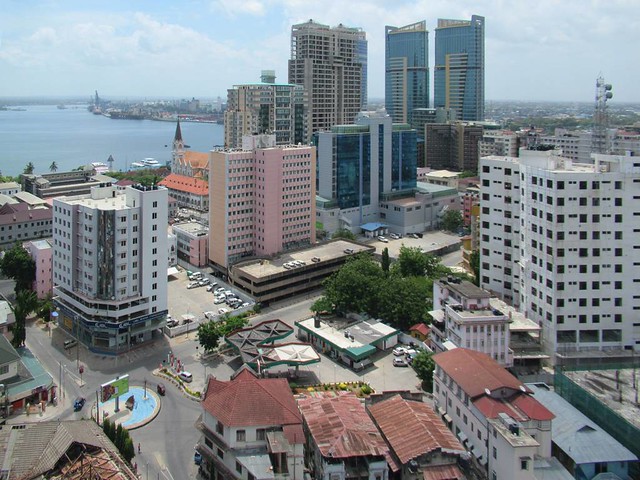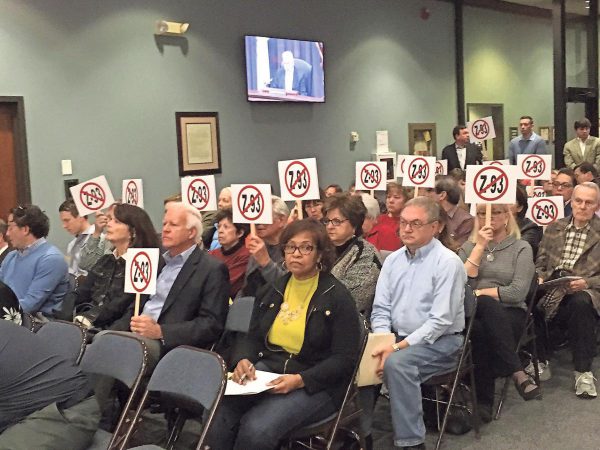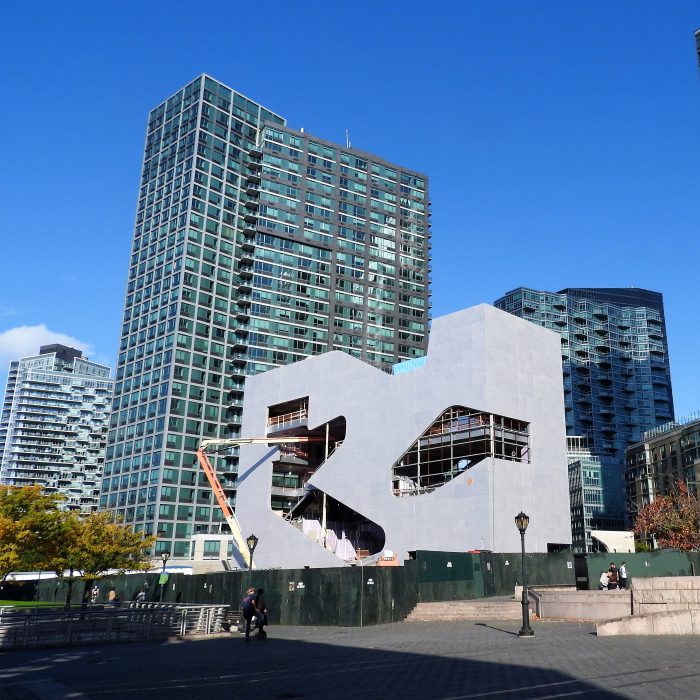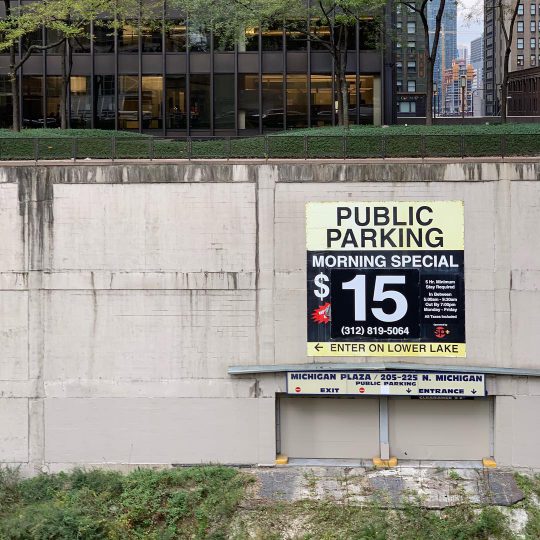Physical Address
304 North Cardinal St.
Dorchester Center, MA 02124
Physical Address
304 North Cardinal St.
Dorchester Center, MA 02124

1. Recently at Market Urbanism A great new paper on how government fights walking by Michael Lewyn Many readers of this blog know that government subsidizes driving- not just through road spending, but also through land use regulations that make walking and transit use inconvenient and dangerous. Gregory Shill, a professor at the University of Iowa College of Law, has written an excellent new paper that goes even further. Why Japanese Zoning More Liberal Than US Zoning by Nolan Gray Why did U.S. zoning end up so much more restrictive than Japanese zoning? To frame the puzzle a different way, why did U.S. and Japanese land-use regulation—which both started off quite liberal—diverge so dramatically in terms of restrictiveness? Democratic Candidates on Housing by Jeff Fong Anti poverty programs have been taking center stage as the 2020 Democratic primary heats up. Proposals from Kamala Harris and Corey Booker target high housing costs for renters and make for an interesting set of ideas. These plans, however, have major shortcomings and fail to address the fundamental problem of supply constraints in high cost housing markets. Against Spot Text Amendments by Nolan Gray As zoning has become more restrictive over time, the need for “safety valve” mechanisms—which give developers flexibility within standard zoning rules—has grown exponentially. What Should I Read to Understand Zoning? by Nolan Gray We are blessed and cursed to live in times in which most smart people are expected to have an opinion on zoning. Blessed, in that zoning is arguably the single most important institution shaping where we live, how we move around, and who we meet. Cursed, in that zoning is notoriously obtuse, with zoning ordinances often cloaked in jargon, hidden away in PDFs, and completely different city-to-city. Homeownership and the Warren Housing Bill by Emily Hamilton Elizabeth Warren’s housing bill has received a lot of love from those who favor […]

1. Recently at Market Urbanism Any Green New Deal Must Tackle Zoning Reform by Nolan Gray According to the Environmental Protection Agency (EPA), transportation and electricity account for more than half of the US’ greenhouse gas emissions. As David Owen points out in his book “Green Metropolis,” city dwellers drive less, consume less electricity, and throw out less trash than their rural and suburban peers. This means that if proponents of the Green New Deal are serious about reducing carbon emissions, they will have to help more people move to cities. New York State’s Property Tax Cap by Michael Lewyn New York’s Gov. Cuomo has recently proposed a tax cut that buys popularity for state lawmakers on the backs of municipalities. In 2011, the state passed a law to limit local governments’ property tax increases to 2 percent or the rate of inflation, whichever is lower. This cap was originally temporary, but Cuomo now proposes to make it permanent. What Should YIMBY’s Learn from 2018? by Nolan Gray Believe it or not, the YIMBY movement won a lot in 2018. And rolling into 2019, elected officials at every level of California government—from the state’s new Democratic governor to San Diego’s Republican mayor—are singing from the YIMBY hymn sheet. All in all, it wasn’t a bad year for a movement that’s only five years old. But what really made 2018 such an unexpected success for YIMBYs? Yimbyism: the Evolution of an Idea by Jeff Fong Five years ago everything in California felt like a giant (land use policy) dumpster fire. Fast forward to today we live in a completely different world. Yimby activists have pushed policy, swayed elections, and dramatically shifted the overton window on California housing policy. And through this process of pushing change, Yimbyism itself has evolved as well. Evidence that home-sharing doesn’t raise rents by Michael Lewyn […]

1. Recently at Market Urbanism: Two Cheers for PHIMBY by Michael Lewyn One alternative to market urbanism that has received a decent amount of press coverage is the PHIMBY (Public Housing In My Back Yard) movement. PHIMBYs (or at least the most extreme PHIMBYs) believe that market-rate housing fails to reduce housing costs and may even lead to gentrification and displacement. Their alternative is to build massive amounts of public housing. New and Noteworthy: Randy Shaw’s Generation Priced Out by Michael Lewyn In Generation Priced Out, housing activist Randy Shaw writes a book about the rent crisis for non-experts. Shaw’s point of view is that of a left-wing YIMBY: that is, he favors allowing lots of new market-rate housing, but also favors a variety of less market-oriented policies to prevent displacement of low-income renters (such as rent control, and more generally policies that make it difficult to evict tenants) “Order without Design: How Markets Shape Cities” Out Today by Nolan Gray Alain Bertaud’s long awaited book, Order Without Design: How Markets Shape Cities, is out today. Bertaud is a senior research scholar at the NYU Marron Institute of Urban Management and former principle urban planner at the World Bank. “Order Without Design”, a new guide to urban planning by Anthony Ling This book is an attack on current city planning and rebuilding. This is how Jane Jacobs opened her 1961 classic “The Death and Life of Great American Cities”. It wouldn’t be an inappropriate opener for Alain Bertaud’s upcoming “Order Without Design”. 2. Also by Market Urbanists: Nolan Gray‘s viral tweet critiquing local control of land use: Local control is America’s weirdest fetish. Every single one of these photos shows a room full of people—in no way representative of their respective communities—agitating against affordable, multifamily, and/or mixed-use housing. Every single one was taken in 2018. pic.twitter.com/4bW2aDwPDI — Nolan Gray (@mnolangray) December 2, […]

1. Recently at Market Urbanism: Three Policies for Making Driverless Cars Work for Cities by Emily Hamilton To avoid repeating mistakes of the past, policymakers should create rules that neither subsidize AVs nor give them carte blanche over government-owned rights-of-way. Multiple writers have pointed out that city policymakers should actively be designing policy for the driverless future, but few have spelled out concrete plans for successful driverless policy in cities. Here are three policies that urban policymakers should begin experimenting with right away in anticipation of AVs. Rent Control Makes It Harder to Vote with Your Feet by Gary Galles devolving political power to lower level governments does not serve citizens’ rights when it comes to rent control, because rent control paralyzes owners’ ability to escape imposed burdens by voting with their feet. 2. Also by Market Urbanism writers: Nolan Gray at Citylab: Voters Said No in California, but Other States Have Rent Control Battles Looming Michael Lewyn at Planetizen: The Lincoln Park Story (On Daniel Hertz new book on the gentrification of the Chicago neighborhood) Michael Lewyn at Planetizen: New Urbanists and New Housing (about the friendly-but-troubled Market Urbanist/New Urbanist relationship) 3. At the Market Urbanism Facebook Group: Roger Valdez for Forbes: How To End The ‘Housing Crisis’ Roger Valdez for Forbes: HQ2 Frontlash Begins: The Answer Is More Housing, Some Built By Amazon Isabella Chu asks: Are people equally concerned about how to bring jobs to the once flourishing and housing rich older cities of the northeast? Anthony Ling asks: What are your thoughts on Richard Florida’s petition against Amazon HQ2’s “auction”? Via Joe Wolf: Seattle’s Most Influential People 2018: The YIMBYs Via Mirza Ahmed: Paid parking could be coming to Tacoma Dome Station Via Elizabeth Connor: Why we should pay more for parking Via Robert Wilson: At “Eleventh Hour,” City Rejects Tiny Home Village Plan to Relocate to TAXI Campus Via […]

1. Recently at Market Urbanism: Response to “Steelmanning the NIMBYs” by Michael Lewyn Scott Alexander, a West Coast blogger, has written a post that has received a lot of buzz, called “Steelmanning the NIMBYs”; apparently, “steelmanning” is the opposite of “straw manning”; that is, it involves making the best possible case for an argument you don’t really support. The land price argument and why it fails by Michael Lewyn One common argument against all forms of infill development runs something like this: “In dense, urban areas land prices are always high, so housing prices will never be affordable absent government subsidy or extremely low demand. 2. Also by Market Urbanism writers: Nolan Gray at Strong Towns: Wide Streets as a Tool of Oppression Nolan Gray at CityLab: The Improbable High-Rises of Pyongyang, North Korea Nolan Gray at Strong Towns: What if Lexington Got Serious About Student Drunk Driving? 3. At the Market Urbanism Facebook Group: Randy Shaw launched pre-orders for his upcoming book, Generation Priced Out: Who Gets to Live in the New Urban America Donald Shoup for Planning Magazine: Parking Price Therapy Nolan Gray shares the campaign site for a YIMBY candidate, Sonja Trauss for Supervisor 2018 Matt Miller asks: What’s the future of retail? Mark D Fulwiler says: Only about 4% of all commuters ( on average ) take mass transit on any given day Ben Barov asks: Are vacancy taxes market urbanism? Andrew Mayer asks: How much urban housing needs to be built to fix the deficit of supply? James Hanley likes open space on waterfronts, but keeps thinking of Jane Jacobs‘ criticisms of big parks. “What are your responses to this?” Via Adam Hengels: Steelmanning the NIMBYs Via Shawn Ruest: Elizabeth Warren’s New Bill Would Spend $500 Billion on Housing Via Carl Webb: So You Want to Change Zoning to Allow for More Housing Via Stephen Bone: How Singapore Solved Its Housing Problem Via Michael Burns: A Network […]

1. Announcements: MUsings are back!! This week, we’ll get you caught up on the latest on our site and social media. Be sure to check out and share the new documentary video produced by The Institute for Humane Studies’ Josh Oldham, in collaboration with MU’s Nolan Gray and Sandy Ikeda. 2. Recently at Market Urbanism: California Legislation Threatens to Become Law and Build More Housing by Martha Ekdahl The bill, AB 2923, specifically targets the San Francisco Bay Area—making it easier than ever for the Bay Area Rapid Transit (BART) to build housing on the land it owns around its transit stations. Light and Air, Sound and Fury; or, Was the Equitable Life Building Panic Only About Shadows? by Nolan Gray In city after city, zoning was pitched as a way to preserve property values. And as the Federal Housing Administration marched across the country as a kind of dark Johnny Appleseed for Euclidean zoning, demanding use segregation, single-family zoning, and low densities in exchange for subsidized mortgages, the agency always defended its demands as an attempt to protect property values. Video: How Zoning Laws Are Holding Back America’s Cities by Nolan Gray It’s an understatement to say that zoning is a dry subject. But in a new video for the Institute for Humane Studies, Josh Oldham and Professor Sanford Ikeda (a regular contributor to this blog) manage to breath new life into this subject, accessibly explaining how zoning has transformed America’s cities. The Foreign Buyers Are Taking Over (Not!) by Michael Lewyn A headline in the Boston Globe screams: “Boston’s new luxury towers appear to house few local residents.” The headline is based on a report by the leftist Institute for Policy Studies, which claims that in twelve Boston condo buildings, “64 percent do not claim a residential exemption, […]

1. Announcements: Get ready for Market Urbanism at #FEEcon June 15-17 in Atlanta. Market Urbanists can use the code MU40OFF to get 40% off. We’ll have several other exciting announcements over the next few days. We can’t wait to see you there! If you are in New York, Market Urbanism is pleased to be a partner of Smart Cities NYC ’17: Powered by People, May 3-6. (smartcitiesnyc.com). The offer code SCNYC100 gets market urbanists a $100 ticket discounted down from the $1,200 standard price. Sandy Ikeda has a short clip in the film Citizen Jane: Battle for the City. Go see it!! Sandy Ikeda‘s Annual Jane’s Walk in Brooklyn Heights is this Sunday at 12:15. Vince Graham, former Chairman of the South Carolina Transportation Infrastructure Bank and friend of Market Urbanism published an op-ed in the Charleston Post and Courier: Unhealthy S.C. appetite for roads demands a diet 2. Recently at Market Urbanism: Market Urbanist Book Review: Cities and The Wealth of Nations by Jane Jacobs by Matthew Robare It seems like just about everyone who has ever set foot in a major city has read The Death and Life of Great American Cities and most professional urban planners have embraced at least part of her ideas. But that was not the only book she wrote and the others deserve attention from urbanists. Government-Created Parking Externalities by Emily Hamilton Developers are not responsible for creating a traffic congestion externality. Rather, city policymakers create this externality when they provide free or underpriced street parking. They cause drivers to waste time and gas sitting in traffic. Parking is not a public good that needs to be publicly-provided; it’s both rivalrous and excludable. Richard Florida and Market Urbanism by Michael Lewyn Florida writes that part of this “crisis” is the exploding cost of housing in some […]

1. Announcements John Morris has started an alternative Facebook group called Flyover Urbanism: A Market Urbanist Group for Flyover Country 2. This Week at Market Urbanism Emily Hamilton Market Urbanism is Still underrated New data keeps coming in that shows that increases in housing supply tend to be followed by declining rental rates, even in the cities facing the highest demand. Nolan Gray Towards A Liberal Approach To Urban Form A liberal approach to urban form accepts that reasonable people can disagree over the ideal urban arrangement. Wrapped into every grand vision and design regulation are particular normative preferences that many may not share. Should retail and residential be separate? Should every apartment receive at least one hour of direct sunlight? Should everyone live on a one acre lot? Jeff Fong Building A Better BART BART owns acres of surface parking spread out across the system. If it were to redevelop these parking lots into high density, mixed use developments, it could copy the MTRC model and create a high yield stream of revenue. Sandy Ikeda The Other Broken Window Whether you quickly mend a broken window, bend over to pick up a piece of trash, or intervene when someone disturbs the peace depends in part on your personal ethics, of course. But it also depends very much on whether your neighbors will applaud or laugh at you for doing it. 3. Where’s Scott? Scott Beyer remains in Portland, and this weekend will visit Eugene and Corvallis. His Forbes article this week was Portland’s Urban Growth Boundary: A Driver of Suburban Sprawl If bustling cities prevent what can be vaguely defined as “sprawl” on their nearest virgin land, it’s not like the people will go away and the sprawl will stop. It may resurface in even more remote places. This is counterproductive both for [density] advocates, and […]

1. Announcements I’ve posted a link on the homepage giving more info on the Market Urbanism programming at the upcoming FEE Conference, which is in Atlanta, June 15-17… The YIMBY party announced it will hold its 2nd annual conference, occurring this year in Oakland, July 13-16… And recently another YIMBY group popped up: YIMBY Denver! 2. This Week at Market Urbanism Michael Lewyn wrote Where the permits are & The “Foreign Buyers” Argument A common argument against new housing supply is that in high-cost cities such as New York, demand from foreign buyers is so overwhelming as to make new supply irrelevant. A recent study (available here) by two business school professors suggests otherwise. Emily Hamilton Conflicting Affordable Housing Policies Recently I presented on a panel at Chapman University on the future of housing in Orange County. Our panel highlighted the tensions between housing programs designed to help low-income and homeless households and those designed to help middle-income households. Sandy Ikeda wrote Addressing Local Knowledge & a book review on The Future Once Happened Here & Of Maps and Modernism In a sense, it may seem silly to criticize a map for being abstract, since, well, that’s what maps are supposed to do or else they would be useless. But there is such a thing as being too abstract. Maps should not abstract from what is essential to its purpose, which is to facilitate travel. 3. MU Elsewhere Emily‘s speech at Chapman University can be found at the 19:30 mark of this link Nolan Gray’s piece last year on Houston’s partial embrace of Market Urbanism was republished on FEE.org. He also published a to-do list for HUD secretary Ben Carson at Forbes. Carson could direct HUD officials to craft and disseminate model zoning reform legislation to the states. As urban history geeks may know, conventional “Euclidian” zoning […]

1. Announcement Another reminder, if you’re a Los Angeles resident, to vote “no” on Measure S on Tuesday, March 7th. More info on the anti-housing initiative can be found here. 2. This Week at Market Urbanism Yglesias Gives Best Tweetstorm Ever by Michael Lewyn Governing The Traffic Commons by Sandy Ikeda I recently showed my students a short video about a radical way of addressing problems of traffic congestion: accidents, pollution, and time wasted on the road…It’s quite simple: Remove traffic lights, cautions, and marked pedestrian crossings. Asher Meyers provides the latest in World City Profiles: European Villages Are Showcases Of Old Urbanism There is always the lurking suspicion that great urbanism is a museum piece, something we cannot recreate. We have to console ourselves with guarding what’s left. Even then, some feel it unfit for ‘modern life,’ that humans cannot live as their recent ancestors had. Urbanists tend to celebrate cities and spaces of great renown, which makes remaking our own little corner of the world seem futile. 3. Where’s Scott? Scott Beyer has left San Francisco and is moving this weekend towards Portland, with in-between stops in Redding, Medford, Eugene and more. His 3 articles this week included one for Governing Magazine on the Yimby Movement, and two for Forbes United States Has 5 Of World’s 10 Most Congested Cities and How Far Can Miami’s Beach Development Spread? But the real story is what’s happening north of Miami Beach. Aside from a few areas dedicated to state parkland, there is now essentially a contiguous urban shoreline extending from the southern tip of Miami Beach up to Fort Lauderdale…And an awful lot of this area is becoming vertical. 4. At the Market Urbanism Facebook Group John Morris wants to start a Pittsburgh Yimby group Isabella Chu wants to know the connection between urban density and improved health outcomes Hussain Akbari wants […]